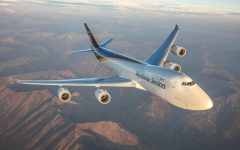 The Asia-Europe trade lane has been buffeted by weakening demand and the outbreak of war in Ukraine over the last 12 months but there are some opportunities to be found. Air cargo capacity on the Asia-Europe route increased marginally (+3%) from the fourth quarter of 2021 to fourth quarter of 2022, but still remains about 18% below pre-pandemic levels, according to the ocean and airfreight rate benchmarking platform Xeneta. This drop is also reflected in the balance with freighter cargo, with bellyhold freight making up just 32% of market share, compared to 55% before the pandemic, says Niall van de Wouw, chief airfreight officer, Xeneta. The stricter Covid rules and lockdowns in China have slowed the return of passenger flights between Europe and Asia “so we don’t see the same level of recovery as we do on the transatlantic for instance”. Russia’s invasion of Ukraine has also affected the route, especially into north east (NE) Asia where flights have traditionally flown over Russia. “We saw prices on Europe – NE Asia route go up very quickly. There was an immediate boost in airfreight rates within a matter of weeks of the war starting,” says van de Wouw. “No doubt higher fuel prices were also a factor, but it is difficult to single out the cost of fuel on its own. And we also saw airline casualties, for instance” He says that rates are now declining but that Asia-Europe rates are declining more slowly than on the Asia-US route. It is notable that in fourth quarter 2022, the spot market accounted for 47% of Asia–Europe volumes. It was 42% in quarter four 2021 and about 33% pre-pandemic.
The Asia-Europe trade lane has been buffeted by weakening demand and the outbreak of war in Ukraine over the last 12 months but there are some opportunities to be found. Air cargo capacity on the Asia-Europe route increased marginally (+3%) from the fourth quarter of 2021 to fourth quarter of 2022, but still remains about 18% below pre-pandemic levels, according to the ocean and airfreight rate benchmarking platform Xeneta. This drop is also reflected in the balance with freighter cargo, with bellyhold freight making up just 32% of market share, compared to 55% before the pandemic, says Niall van de Wouw, chief airfreight officer, Xeneta. The stricter Covid rules and lockdowns in China have slowed the return of passenger flights between Europe and Asia “so we don’t see the same level of recovery as we do on the transatlantic for instance”. Russia’s invasion of Ukraine has also affected the route, especially into north east (NE) Asia where flights have traditionally flown over Russia. “We saw prices on Europe – NE Asia route go up very quickly. There was an immediate boost in airfreight rates within a matter of weeks of the war starting,” says van de Wouw. “No doubt higher fuel prices were also a factor, but it is difficult to single out the cost of fuel on its own. And we also saw airline casualties, for instance” He says that rates are now declining but that Asia-Europe rates are declining more slowly than on the Asia-US route. It is notable that in fourth quarter 2022, the spot market accounted for 47% of Asia–Europe volumes. It was 42% in quarter four 2021 and about 33% pre-pandemic.
Breaking News
- IATA unveils SAF matchmaking platform
- ‘Global air cargo tonnages rebounds partially: WorldACD
- CCI unveils ‘Trans Africa’ to boost cross border logistics
- DHL Express expands logistics infra at BIAL
- ‘High-value and sensitive goods should have insurance coverage’
- ‘Monsoon Enabled’ terminal infrastructure must in Inda
- ‘LSPs must cover the trucks with layers of tarpaulin and plastic sheets durinng monsoons’
- ‘Teams must act quickly during sudden downpours or waterlogging scenarios’
- ‘Proactive planning must for high-value shipments to ensure safety’
- Shipway launches AI chatbot Loca to enhance digital efficiency
- HYD Air Cargo unveils CLIMB to boost freight forwarding
 Cargo Breaking News
Cargo Breaking News


